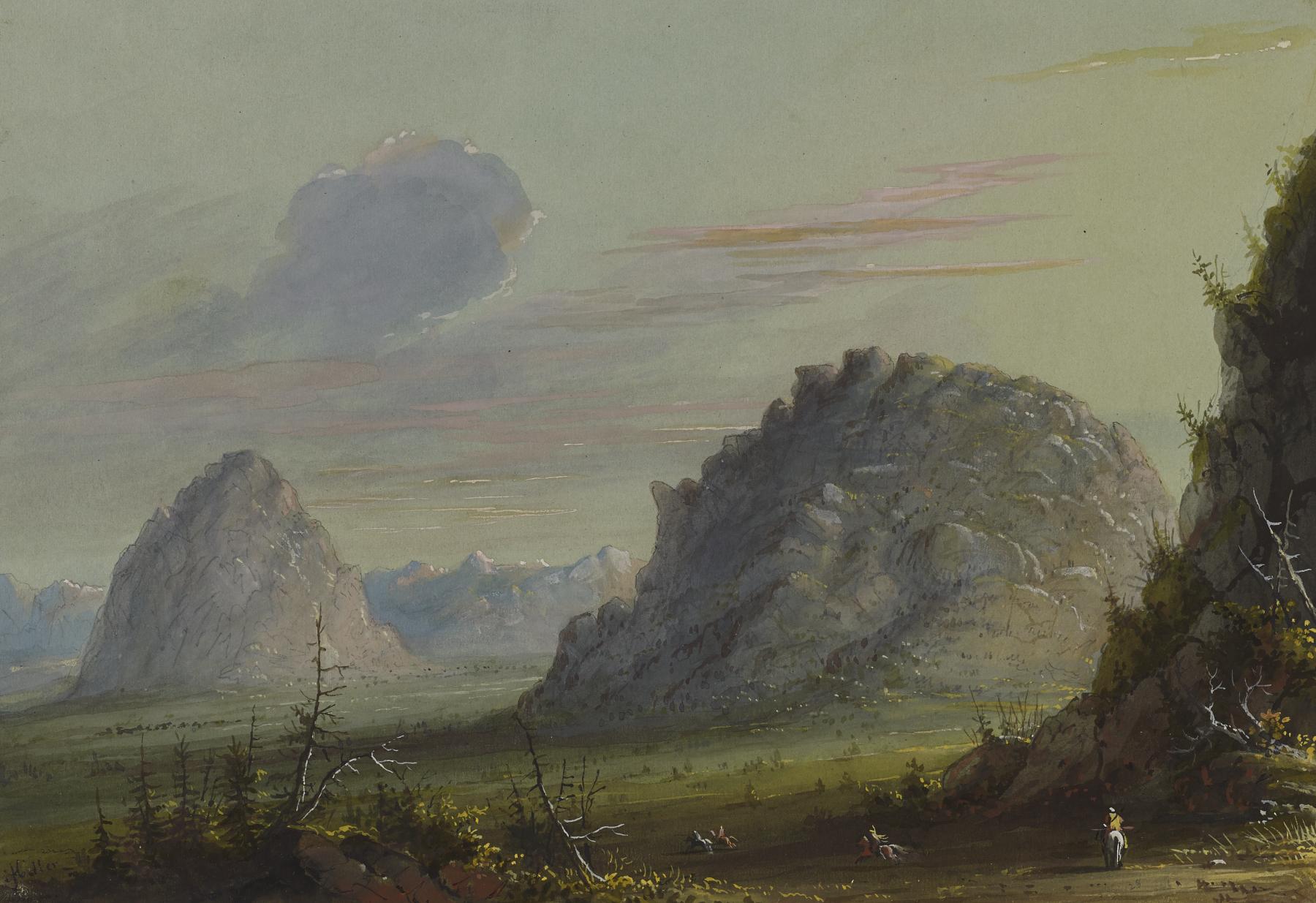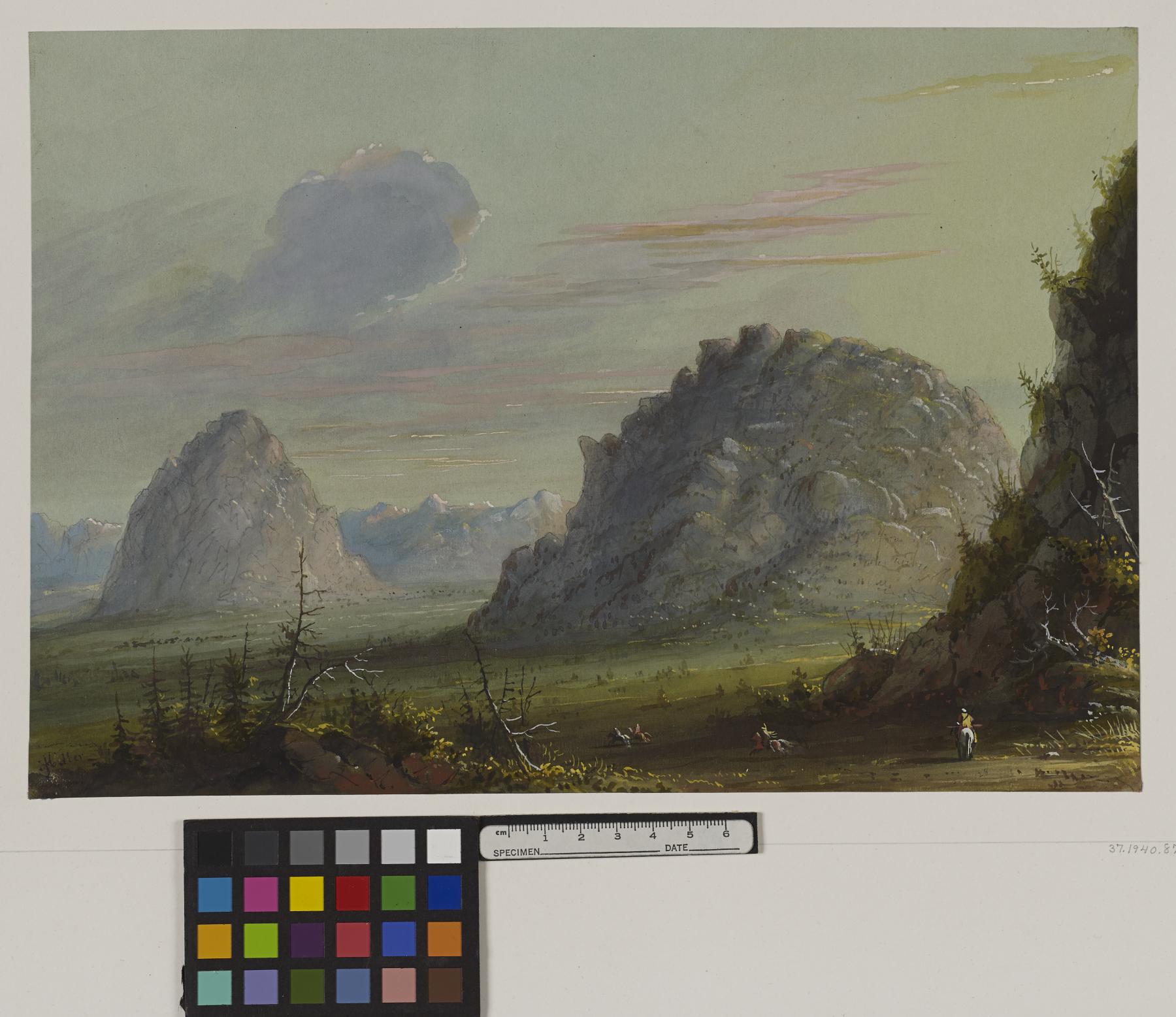Formations of Rock
(18th and 19th Centuries )
Extracts from Alfred Jacob Miller’s original text, which accompanied his images of Native Americans, are included below for reference.
"In this district of the prairie, west of Laramie, and south of the Platte, these monstrous rocks rise immediately from the level plain, attaining altitudes from 500 feet upwards. They are of all imaginable shapes, as if nature had been in eccentric and merry mood;- taking care however to have the centre of gravity fall is such a manner as to combine the most complete solidity with the utmost strength. They will be as they are now when the great pyramids of Egypt are forgotten;- with the proviso whoever of 'Ochiltree' in the 'Antiquary,' 'Yemaun keep hands and gunpowther frae them.' Of what possible use can they be? With a telescope you can see the mountain sheep looking complacently on us,- they scale these dizzy heights with ease and defy us to follow,- this is the use to them. At night (if they discover no enemy near) the flock descends for food and drink, and by daylight return to the tops of thes impregnable forts, where they sleep secure. Trappers state that when two males from opposite directions meet on a narrow ledge of rock neither make way, but give battle and continue it, until one or the other is thrown down." A.J. Miller, extracted from "The West of Alfred Jacob Miller" (1837).
In July 1858 William T. Walters commissioned 200 watercolors at twelve dollars apiece from Baltimore born artist Alfred Jacob Miller. These paintings were each accompanied by a descriptive text, and were delivered in installments over the next twenty-one months and ultimately were bound in three albums. Transcriptions of field-sketches drawn during the 1837 expedition that Miller had undertaken to the annual fur-trader's rendezvous in the Green River Valley (in what is now western Wyoming), these watercolors are a unique record of the closing years of the western fur trade.
Inscription
Provenance
Provenance (from the French provenir, 'to come from/forth') is the chronology of the ownership, custody, or location of a historical object. Learn more about provenance at the Walters.
William T. Walters, Baltimore, 1858-1860, by commission; Henry Walters, Baltimore, 1894, by inheritance; Walters Art Museum, 1931, by bequest.
Geographies
USA (Place of Origin)
Measurements
8 7/16 x 12 1/4 in. (21.4 x 31.1 cm)
Credit Line
Commissioned by William T. Walters, 1858-1860
Location in Museum
Not on view
Accession Number
In libraries, galleries, museums, and archives, an accession number is a unique identifier assigned to each object in the collection.
In libraries, galleries, museums, and archives, an accession number is a unique identifier assigned to each object in the collection.
37.1940.87







